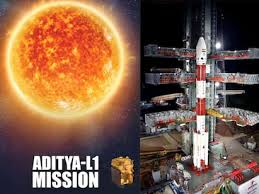Wordsfeed News Desk: In a momentous event, Aditya-L1 was successfully launched shortly before midday, drawing cheers from hundreds of spectators who witnessed the rocket’s deafening ascent. An official from the Indian Space Research Organisation (ISRO) declared the launch a success, confirming that all systems were operating normally as the spacecraft embarked on its journey to the outer layers of the sun.
This pioneering mission is equipped with advanced scientific instruments designed to study the sun’s outermost layers over a span of four months. While the United States and the European Space Agency (ESA) have previously dispatched probes toward the sun, starting with NASA’s Pioneer program in the 1960s, and Japan and China have launched their solar observatory missions, Aditya-L1 marks a historic milestone as the first Asian mission to orbit the sun.
Astrophysicist Somak Raychaudhury described the mission as a significant challenge for India. Aditya will focus on studying coronal mass ejections, which are periodic discharges of plasma and magnetic energy from the sun’s atmosphere. These powerful bursts have the potential to reach Earth and disrupt satellite operations. Aditya’s data will not only aid in predicting these events but also contribute to a deeper understanding of their mechanisms, potentially eliminating the need for a satellite warning system in the future.
Aditya, named after the Hindu Sun deity, will cover a distance of 1.5 million kilometers (930,000 miles) to reach its destination, representing just one percent of the immense gap between Earth and the Sun. At this juncture, gravitational forces from both celestial bodies will balance, allowing the mission to maintain a stable halo orbit around the sun.
This groundbreaking mission relies on the ISRO’s PSLV XL rocket, a stalwart of the Indian space program known for powering previous missions to the Moon and Mars. Besides its primary focus on coronal mass ejections, Aditya’s journey promises to shed light on various other solar phenomena by capturing images and measuring particles in the sun’s upper atmosphere.


0 Comments